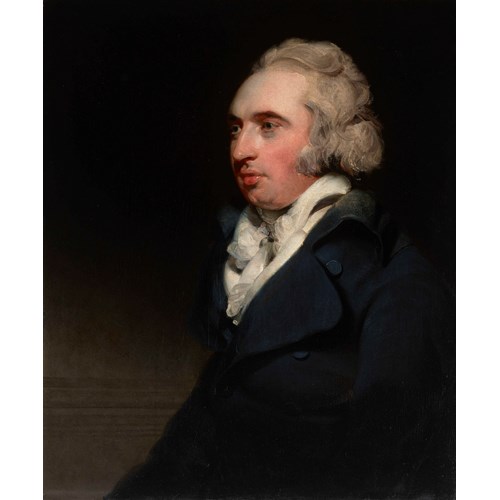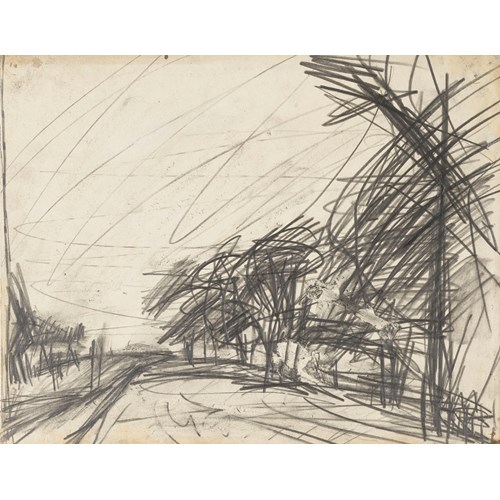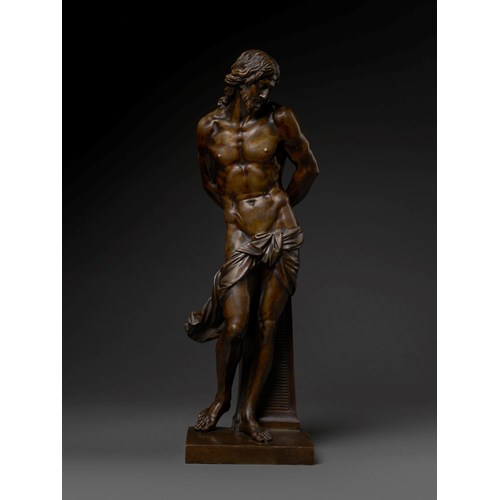Paul Nash
Cumulus Head
Date 1944
Medium Oil on canvas
Dimension 60 x 80 cm (23⁵/₈ x 31¹/₂ inches)
Paul Nash, ‘Aerial Flowers’, 1947
During the last decade of his life Nash saw new meaning in the sky. It was to him a
significant and visionary space in which so much of Britain’s future had played out during
the war and which therefore came to hold as much importance as the physical ground around
him. Having been appointed as a war artist with the Royal Air Force and Air Ministry, Nash
explained that the Second World War had changed his perception of the sky: When the war
came, suddenly the sky was upon us all….Everyone was searching the sky…” - the result was
mesmeric, producing works such as the Battle of Britain.
His war experience had given him new inspiration, but his attention had already turned from
the earth to the air. From June 1938 onward, Nash would spend considerable time in
Gloucestershire at Madams, the home of Charles and Clare Neilson. In declining health, the
house was to become a retreat for him from the anxiety and deprivations of the war and
together with the countryside around, was to be the most important source of material for
pictures during his last decade. In particular, he drew inspiration from the views of the
Cotswolds escarpment overlooking the Severn valley, and the vast vistas of open sky
afforded from this raised viewpoint on Cleeve Hill - one thousand feet above the plain and
fittingly known as the ‘Cloud’.
Whatever the subject matter, there was one constantly recurring obsession which Nash tried
to reduce to pictorial terms, namely the obsession of the mind’s voyage through space. It was
the same interest in the flight of the mind that led him in 1943 to produce a series of drawings
of Aerial Flowers and a remarkable essay explaining their genesis. By 1944, Nash’s work
was being commissioned by the War Artists’ Advisory Committee’ (WAAC), chaired by Sir
Kenneth Clark. It was during this time that important works such as the Battle of Germany
(1944), sequel to the Battle of Britain (1941), were produced.
Nash had never flown in a plane and, suffering from severe asthma, was now too ill to do so.
Intrigued with the idea of flying and the dreams he had experienced since childhood, he based
this painting on his imaginings, as well as aerial photographs. To Nash's mind the noisy and
cramped reality of 'heavier-than-air' flight could never match his fantasy that flying would be
silent and instinctive, like swimming. Nash's ambitious late painting represents a gathering of
ideas. The viewer follows the bomber's approach to the target. Nash saw fungal shapes, one
of many recurring motifs in his work, as poetic representations of death but also rebirth. Here
the clouds resemble almost nuclear detonations, prefiguring the atomic mushroom cloud, or
indeed signify parachutes, referencing Nash's fascination with the term the rose of death, first used during the Spanish Civil War (1936 – 1939) to describe the sight of parachutes 'blossoming' in the sky. The present work exhibits much of these qualities and influences.
It is possible that this work was commissioned by the WAAC in 1944 and was originally
intended to depict a flying explosive. In a letter to Clare Neilson on 5 September 1944, Nash
described that 'K. Clark wanted me to do a sequel to 'Battle of Britain' on the flying bomb’. A
watercolour and crayon example with similar composition emerged at Christie’s in 2016, and
may have been a preparatory study for the present work.
Date: 1944
Medium: Oil on canvas
Signature: Signed lower right: Paul Nash
Dimension: 60 x 80 cm (23⁵/₈ x 31¹/₂ inches)
Provenance: The Artist
Margaret Nash
The Collection of Godfrey Winn
Private collection to 2024,
Acquired from the above.
Literature: Andrew Causey, Paul Nash, Oxford University Press, Oxford, 1980.
Paul Nash, Aerial Flowers, Tate Archive, 1947
Tate Gallery, Paul Nash: paintings and watercolours, Tate Gallery, 1975
Exhibition: Paul Nash, 1889-1946: A Memorial Exhibition, 17 March – 2 May, 1948, No.65
A Salute to British Surrealism, April - May 1985, Colchester, The Minories, No. 59.
This exhibition travelled to London, Blond Fine Art, May - June 1985; Hull, Ferens
Art Gallery, July - August 1985
Plus d'œuvres d'art de la Galerie









